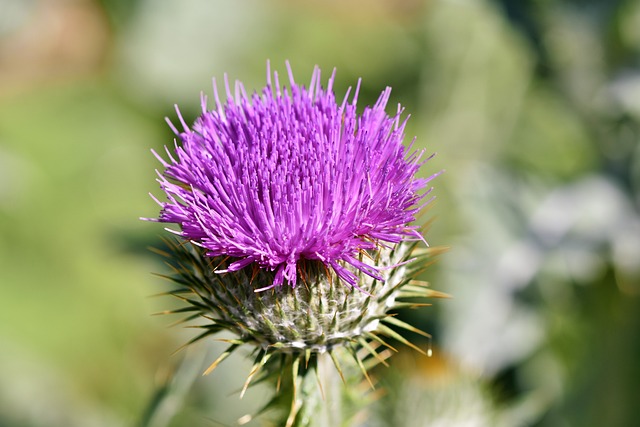
7 Medicinal Plants for Hormone Balance
Nature’s pharmacy provides effective means to naturally support our bodies in achieving hormone balance. It’s important to emphasize that Ayurveda prioritizes an individualized approach. The selection of herbs can differ depending on an individual’s unique constitution (Prakriti) and the specific imbalance (Vikriti) they may be experiencing. In this article, we will delve into the distinctive properties of the following plants from both Western and Ayurvedic viewpoints: Ashwagandha, Nettle, Roseroot, Milk Thistle, Maca, Cinnamon, and Chasteberry.
Here are my favorite medicinal plants for hormone balance:
Ashwagandha
Ashwagandha is a powerful natural remedy that can assist in restoring inner balance, especially for those experiencing constant pressure, sleep issues, or feelings of nervousness and anxiety. This herb functions as a natural adaptogen, aiding the body in effectively managing stress and emotional strain. It actively supports adrenal and thyroid functions, reduces inflammation, and contributes to stabilizing blood sugar levels. Ashwagandha is available in both capsule and powder forms, providing flexibility in consumption methods.
Here’s how Ashwangadha might influence each dosha:
Vata Imbalance:
Symptoms: Anxiety, restlessness, insomnia, dry skin, constipation, andfatigue.
Ashwagandha’s Role: Ashwagandha is grounding and calming, making it beneficial for reducing anxiety and promoting relaxation. It nourishes the nervous system, helps with sleep, and supports the overall stability that Vata individuals may lack during imbalance.
Pitta Imbalance:
Symptoms: Irritability, inflammation, digestive issues, skin rashes, and overheating.
Ashwagandha’s Role: Ashwagandha has a cooling nature, making it useful for pacifying excess heat and inflammation associated with Pitta imbalance. It supports the digestive system, helps manage stress-related irritability, and promotes a sense of calm.
Kapha Imbalance:
Symptoms: Weight gain, lethargy, congestion, respiratory issues, and emotional heaviness.
Ashwagandha’s Role: While ashwagandha has a grounding effect, it’s important not to overuse it in cases of severe Kapha imbalance, as it may exacerbate the feeling of heaviness. In moderate amounts, it can be beneficial for providing energy, reducing lethargy, and supporting emotional well-being.

Nettle
If you’re experiencing hormone-related water retention, incorporate two cups of nettle leaf tea into your daily routine. This herb boasts detoxifying and purifying properties while also stimulating metabolism. Moreover, nettle leaves are rich in essential minerals such as iron, potassium, and silicon. Notably, nettle effectively alleviates heavy menstrual bleeding and exhibits efficacy against inflammation and dermatitis.
Here’s how nettle may impact each dosha:
Vata Imbalance:
Benefits: Nettle is generally considered warming and can be beneficial for Vata imbalances. It may help alleviate symptoms associated with excess Vata, such as coldness, dryness, and nervousness.
Caution: In excess, nettle’s diuretic properties might exacerbate Vata imbalances related to dehydration. It’s essential to balance its consumption with hydrating elements.
Pitta Imbalance:
Benefits: Nettle is often considered cooling, making it potentially useful for Pitta imbalances. It may help soothe inflammation, acidity, and heat-related conditions.
Caution: Despite its cooling nature, some individuals may be sensitive to nettle. It’s advisable to monitor the body’s response, especially if there is a known Pitta sensitivity.
Kapha Imbalance:
Benefits: Nettle is considered drying and may be beneficial for Kapha imbalances by helping to reduce excess mucus and water retention.
Roseroot
If you’re experiencing tiredness, exhaustion, depression, or difficulty concentrating due to persistent stress, consider incorporating roseroot (Rhodiola rosea) into your routine. This medicinal plant effectively regulates cortisol levels, enhances mood, boosts mental performance, and provides energy. Rhodiola root is conveniently available in capsule form or as a tincture, offering flexibility in consumption options.
Here’s how roseroot may influence each dosha:
Vata Imbalance:
Properties: Rhodiola is generally considered to have warming properties. Effect on Vata: It may help balance Vata by providing warmth and stability. Vata imbalance often leads to anxiety, restlessness, and a scattered mind, and roseroot’s calming effects may be beneficial.
Pitta Imbalance:
Properties: Rhodiola is often classified as having a cooling energy.
Effect on Pitta: Its cooling nature may be helpful in calming excess Pitta. Pitta imbalance can manifest as irritability, inflammation, and excessive heat in the body, and roseroot’s cooling properties might offer relief.
Kapha Imbalance:
Properties: Rhodiola is generally considered to be light and drying.
Effect on Kapha: While it has a drying effect, it may help balance excess Kapha by providing stimulation and reducing lethargy. Kapha imbalance often leads to heaviness, sluggishness, and a lack of motivation.

Milk thistle
The traditional medicinal plant, milk thistle, stimulates liver detoxification, aiding in the elimination of excess endogenous or foreign estrogen. It shields the liver from toxins and promotes the regeneration of damaged liver cells, ensuring optimal organ function. This, in turn, enhances nutrient utilization, supports thyroid hormone synthesis, and boosts metabolism and fat burning. The active ingredient, silymarin, additionally stimulates digestion and alleviates feelings of fullness, heartburn, and constipation. Milk thistle is conveniently available in various forms such as capsules, tablets, tea, or tincture.
Here’s how milk thistle may impact each dosha:
Vata Imbalance:
Milk thistle is considered to have a grounding effect, which may be beneficial for individuals with Vata imbalance.
Vata imbalance is associated with qualities like dryness, coldness, and instability. Milk thistle’s potential ability to support liver function and maintain a balanced digestive system could be supportive for Vata types.
Pitta Imbalance:
Pitta individuals, characterized by qualities of heat and intensity, may benefit from milk thistle due to its potential cooling and anti-inflammatory properties. The liver, a key organ affected by milk thistle, is associated with Pitta. Supporting liver health may contribute to maintaining a balanced Pitta dosha
Kapha Imbalance:
Milk thistle’s potential detoxifying properties might be helpful for individuals with Kapha imbalance. Kapha imbalance is linked to qualities such as heaviness and congestion. Supporting liver detoxification may aid in balancing Kapha dosha.
Maca
Maca (Lepidium meyenii) is a natural adaptogen renowned for its stress-reducing properties and hormone-balancing effects, particularly beneficial for women in their fertile age and early menopause. This powerful herb helps alleviate low progesterone and estrogen levels, activates the thyroid, boosts libido, and alleviates various menopausal symptoms. In younger women, maca enhances fertility, regulates menstrual cycle irregularities, and mitigates symptoms of premenstrual syndrome (PMS). Conveniently, maca is available in capsule or powder form, making it easy to incorporate into your routine, such as blending it into smoothies. When purchasing maca, opt for high-quality, raw organic powder sourced from Peru.
Here’s how maca might influence each dosha:
Vata Imbalance:
Maca is considered warming, which can be beneficial for Vata individuals who tend to be cold and experience imbalances related to excess Vata. It may provide a grounding effect and support energy levels.
Pitta Imbalance:
Maca is generally considered warming, which might aggravate Pitta heat-related imbalances. It might provide a calming effect and support hormonal balance.
Caution: If someone experiences digestive heat or acidity, it’s advisable to monitor how the body reacts.
Kapha Imbalance:
Positive Influence: Maca’s potential ability to enhance energy and vitality could be beneficial for Kapha individuals, who may sometimes struggle with lethargy. It might provide a gentle stimulant effect.

Cinnamon
The spice cinnamon stimulates glucose uptake by cells, effectively lowering elevated blood sugar, insulin, and cholesterol levels, as well as reducing high blood pressure. Incorporating up to 1 teaspoon of cinnamon powder daily is ideal, whether it’s added to porridge, golden milk, or your smoothie. It’s essential to ensure that you’re using authentic Ceylon cinnamon, as the inferior cassia cinnamon may have adverse effects even in small quantities.
Here’s how cinnamon may impact each dosha:
Vata Imbalance:
Cinnamon is warming, sweet, and has a slightly spicy flavor. It can be beneficial for Vata imbalances, as it helps to counteract the cold and dry qualities associated with excess Vata. The warming nature of cinnamon can promote circulation, alleviate coldness, and provide comfort.
Pitta Imbalance:
Cinnamon is generally considered to have a warming and stimulating effect. However, moderation is key, as excessive use may aggravate Pitta in some cases.
Kapha Imbalance:
Cinnamon’s warming and stimulating qualities make it beneficial for Kapha imbalances. It can help counteract the cold and heavy qualities associated with excess Kapha, promoting digestion and reducing sluggishness.
Chasteberry
For centuries, chasteberry (Vitex agnus-castus) has been a staple in treating hormonal disorders among women of fertile age. It actively stimulates the production of pituitary hormones, facilitating progesterone production to counteract estrogen dominance. This medicinal plant supports a regular menstrual cycle, alleviates breast tenderness, and effectively addresses various symptoms of premenstrual syndrome (PMS).
Here’s an overview of how Chasteberry might influence each dosha:
Vata Imbalance:
Bitter and astringent tastes, which are present in Chasteberry, can help balance excess Vata. However, it should be used in moderation. Its potential calming effects may benefit individuals with Vata imbalances, as Vata is associated with qualities such as dryness, coldness, and lightness.
Pitta Imbalance:
Chasteberry’s bitter taste and potential cooling properties might be beneficial for Pitta imbalances. It could help alleviate symptoms related to excess heat, inflammation, and acidity, often associated with Pitta dosha.
Kapha Imbalance:
Chasteberry’s bitter taste and astringent properties may contribute to balancing Kapha, as these qualities are opposite to the heavy and sweet characteristics of Kapha. It might help in reducing excess mucus or dampness, which is typical in Kapha imbalances.
In conclusion, harnessing the power of medicinal plants can be a transformative journey towards achieving hormonal balance and overall well-being. From Ashwagandha’s stress-relieving properties to Milk Thistle’s liver detoxification benefits, these natural remedies offer a holistic approach to supporting our bodies in finding equilibrium. Whether you’re seeking relief from hormonal imbalances, menstrual irregularities, or menopausal symptoms, incorporating these botanical allies into your daily routine can pave the way for renewed vitality and vitality.
If you’re ready to embark on this journey to hormonal harmony, I invite you to explore my services as a Ayurveda Health & Hormone Coach. Together, we can tailor a personalized wellness plan that integrates the power of medicinal plants, dietary adjustments, and lifestyle modifications to support your unique health goals. Drop me a message.


